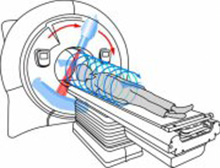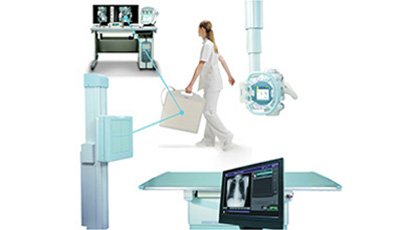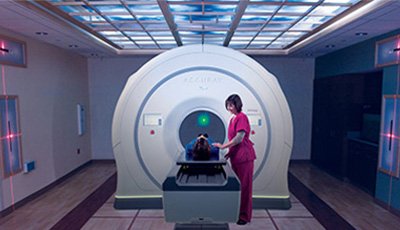
"250,000$ Ödül - TomoTherapy İddaa Ediyor". TomoTherapy, Makalede Açıklanan Kalite Kriterlerine Göre Varian'ın RapidArc modelinin TomoTherapy'den daha Üstün Olduğunu Kanıtlayan Amerikada'ki Herhangi bir Kanser Merkezine 250,000$ vereceğini Açıkladı...
Time will tell whether it's a marketing masterstroke or a piece of misjudged commercialism that's best assigned to the "dud ideas" file. Earlier this week, TomoTherapy, maker of the TomoTherapy Hi.Art radiotherapy system, took the unusual step of issuing a Treatment Quality Challenge that sees it going head to head - in a very public way - with arch-rival Varian Medical Systems.
In terms of specifics, TomoTherapy says it will award $250,000 to any US cancer centre that demonstrates the "ability to beat the quality of a TomoTherapy treatment plan using the new RapidArc product from Varian". It would appear that an already intense rivalry has just been ratcheted up another notch or two.
For reference, TomoTherapy's Hi.Art system has emerged as an increasingly popular method of IMRT delivery in the past few years. The core technology - known as helical tomotherapy - makes use of a large number of beam projections and helical delivery to produce an extremely high conformation of the dose distribution to complex targets.
Varian's RapidArc system, unveiled at the ASTRO meeting in Los Angeles, CA, in October, represents another variation on the IMRT theme. The system exploits customized algorithms to deliver a complete IMRT treatment in a single rotation of the linac around the patient, a procedure also known as volumetric modulated arc therapy (VMAT). Modulation is achieved by simultaneously varying the dose delivery rate and the shape of the treatment aperture during the one rotation of the gantry.
TomoTherapy describes the treatment challenge as "an effort to refocus industry priorities and clear up potential marketplace confusion". In particular, the Madison, WI-based vendor appears to take issue with Varian's claim that RapidArc delivers uncompromised treatments in "two minutes or less".
"With this challenge, we aim to provide a forum for US clinicians to objectively review the quality that a continuous helical TomoTherapy treatment affords over a two-minute, single-rotation RapidArc delivery," said Fred Robertson, CEO of TomoTherapy.
A statement on the TomoTherapy website offers up more in the way of context. "We believe that the two-minute treatments inherently can be compromised [and] look forward to working collaboratively with centres that have decided to acquire a new radiotherapy system and want the added confidence provided by an honest, side-by-side quality comparison."
Tim Guertin, CEO of Varian Medical Systems, seems unfazed by TomoTherapy's sabre-rattling. "Varian has always been committed to fighting cancer, and we are confident that RapidArc and all the other technologies that we are bringing forth will be important contributions in this effort," he told medicalphysicsweb.
"We will be guided by clinicians, who evaluate new technologies, as they have always done, in their clinics and in peer-reviewed journals, and then decide what is best for their patients. Based on what we have heard from investigators so far, we believe RapidArc will play a very important part in the fight against cancer."
So what do those clinical investigators think? Alan Nahum, a senior clinical physicist at the Clatterbridge Centre for Oncology (Wirral, UK), describes TomoTherapy vs Varian as a "long-running saga for us insiders".
He speaks from direct experience. Along with collaborators in Italy, Nahum is part of a team that has just completed a dose–volume and biological-model-based comparison between helical tomotherapy and (inverse-planned) intensity-modulated arc therapy for prostate tumours (in press, Radiother. Oncol.).
"Science aside, I find this whole business [of a treatment challenge] somewhat distasteful," he explained in an email to medicalphysicsweb. "This is a very clear example of an aggressive US marketing strategy."
He continued: "These issues ought to be decided by reading the scientific literature and considering many other features of a radiation treatment machine, such as its ability to perform a variety of treatment techniques, its reliability, its compatibility with other devices and so on."
Niall MacDougall, head of clinical dosimetry at St Bartholomew's Hospital, London, has another take. "On a purely dosimetric front, we've just published an analysis of dynamic IMRT versus tomotherapy and found little difference - certainly nothing of clinical note (Br. J. Radiol. 81 333)."
How will the TomoTherapy challenge work? The vendor says it will collaborate with eligible cancer centres to agree on the clinical quality protocol for comparatively assessing and documenting performance of a Hi.Art treatment delivery versus a RapidArc treatment delivered in two minutes or less.
Key protocol attributes will focus on quality of cancer treatments for two to three patient CT data sets. According to the website: "Quality will be measured on target dose homogeneity, target dose conformity and region-at-risk avoidance. Treatment evaluation will consider both plan quality and proven treatment delivery verification within internationally accepted guidelines for accuracy."
For those who are interested (and eligible), the main terms and conditions of the challenge are listed below.
• Centres must be pre-approved for a 2008 new system purchase and 2008 new system installation.
• Cancer centre and TomoTherapy will agree on the clinical quality protocol for comparatively assessing and documenting performance of a Hi.Art treatment delivery vs RapidArc treatment delivered in "two minutes or less".
• Key protocol attributes will focus on quality (target dose homogeneity, target dose conformity and region-at-risk avoidance) of cancer treatments for two to three patient CT data sets.
• Tumour types will include prostate as well as head-and-neck cancers.
• Treatment evaluation will consider both plan quality and proven treatment delivery verification within internationally accepted guidelines for accuracy.
• The evaluation is to be completed within 60 days of protocol agreement.
• Comparisons must be generated and delivered on commercially available software/hardware.
And finally....
• If the Hi.Art treatment system is deemed to outperform the competitive product in the evaluation, the hospital agrees to move forward with a Hi.Art treatment system purchase and system installation in 2008. If the competitive product outperforms the Hi.Art treatment system, TomoTherapy will pay the cancer centre $250,000 towards the 2008 installation of a RapidArc-equipped linac, or toward the purchase of a TomoTherapy Hi.Art treatment system (provided the systems are installed and available for clinical use before December 31 2008).
Marketing gimmickry or a useful clinical exercise? Have your say on TomoTherapy's Treatment Quality Challenge by clicking on the commenting tool below.








